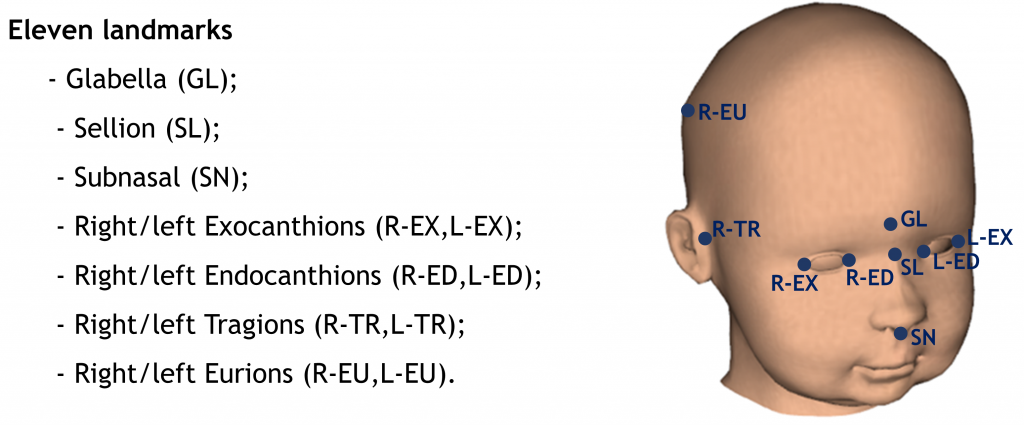Overview
Deformational plagiocephaly (DP) is characterized by an asymmetrical distortion of the infant’s skull, typically caused by postnatal positioning or prenatal restrictions. Current diagnostic rely on manual identification of several anthropometric landmarks in the 3D head models, later extracting relevant clinical indexes. However, manual labeling is still performed to identify these landmarks, which is time-consuming, tedious and prone to inter- and intra-observer variability. During the last years, several researchers exploited different artificial intelligent solutions to automatically perform routinely and tedious clinical tasks. Based on that, AI can be an interesting solution to promote head shape evaluation, for example, to improve the diagnose of DP. To promote the use of AI methods for head shape evaluation, a synthetic database was proposed in:
Torres H., Morais P., Fritze A., Oliveira B., Veloso F., Ruediger M., Fonseca J.C., Vilaça J. L., “Anthropometric Landmark Detection in 3D Head Surfaces using a Deep Learning Approach” (under review, 2020).
The database is publicly released here. All documents and papers that report research on this synthetic database must cite the original paper:
Torres H., Morais P., Fritze A., Oliveira B., Veloso F., Ruediger M., Fonseca J.C., Vilaça J. L., “Anthropometric Landmark Detection in 3D Head Surfaces using a Deep Learning Approach” (under review, 2020).
Data description
This database is composed of 1250 3D head models. 50 head models were initially synthetically generated using the software MakeHuman. The remaining models were generated using a 3D data augmentation approach described in detail in the original publication.
For each model, 11 clinical landmarks were manually labeled.

